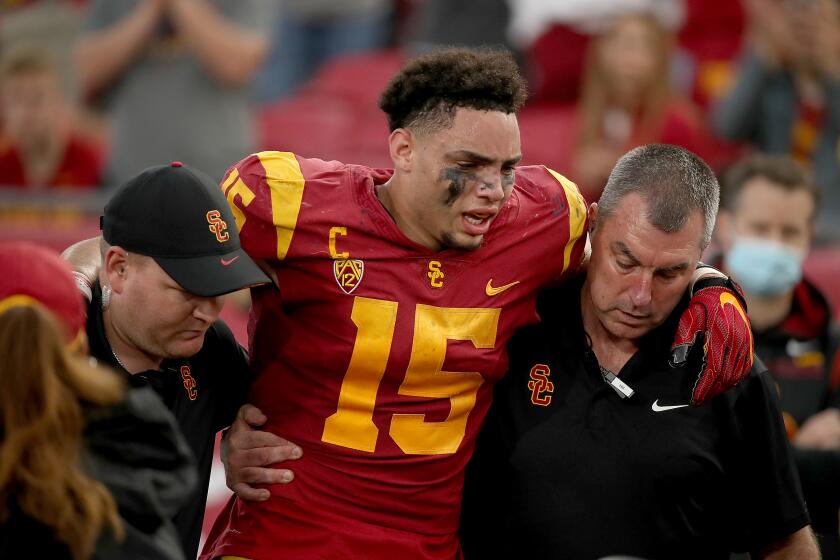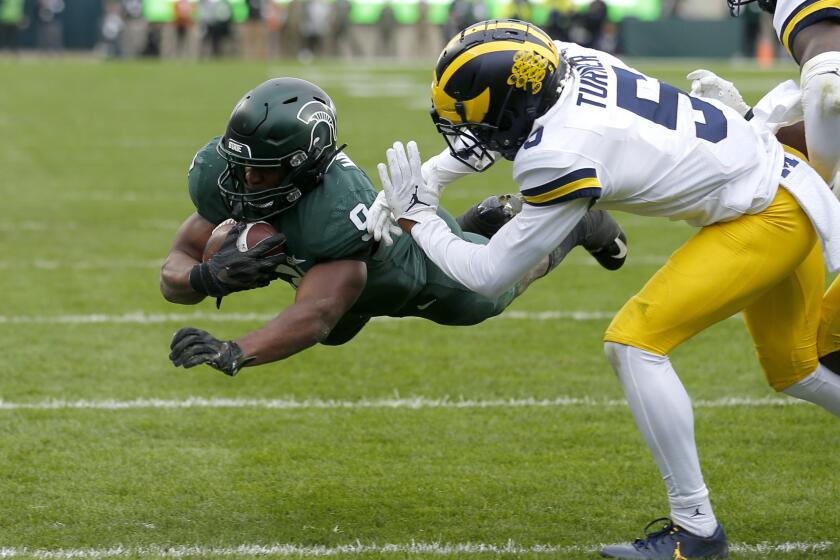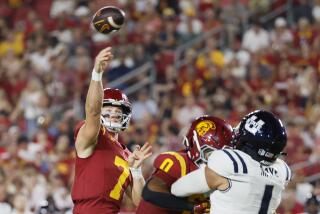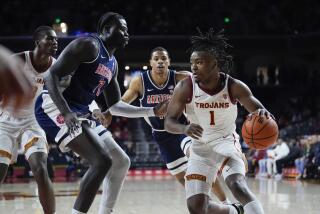USC takeaways: Quarterback controversy emerges after win over Arizona
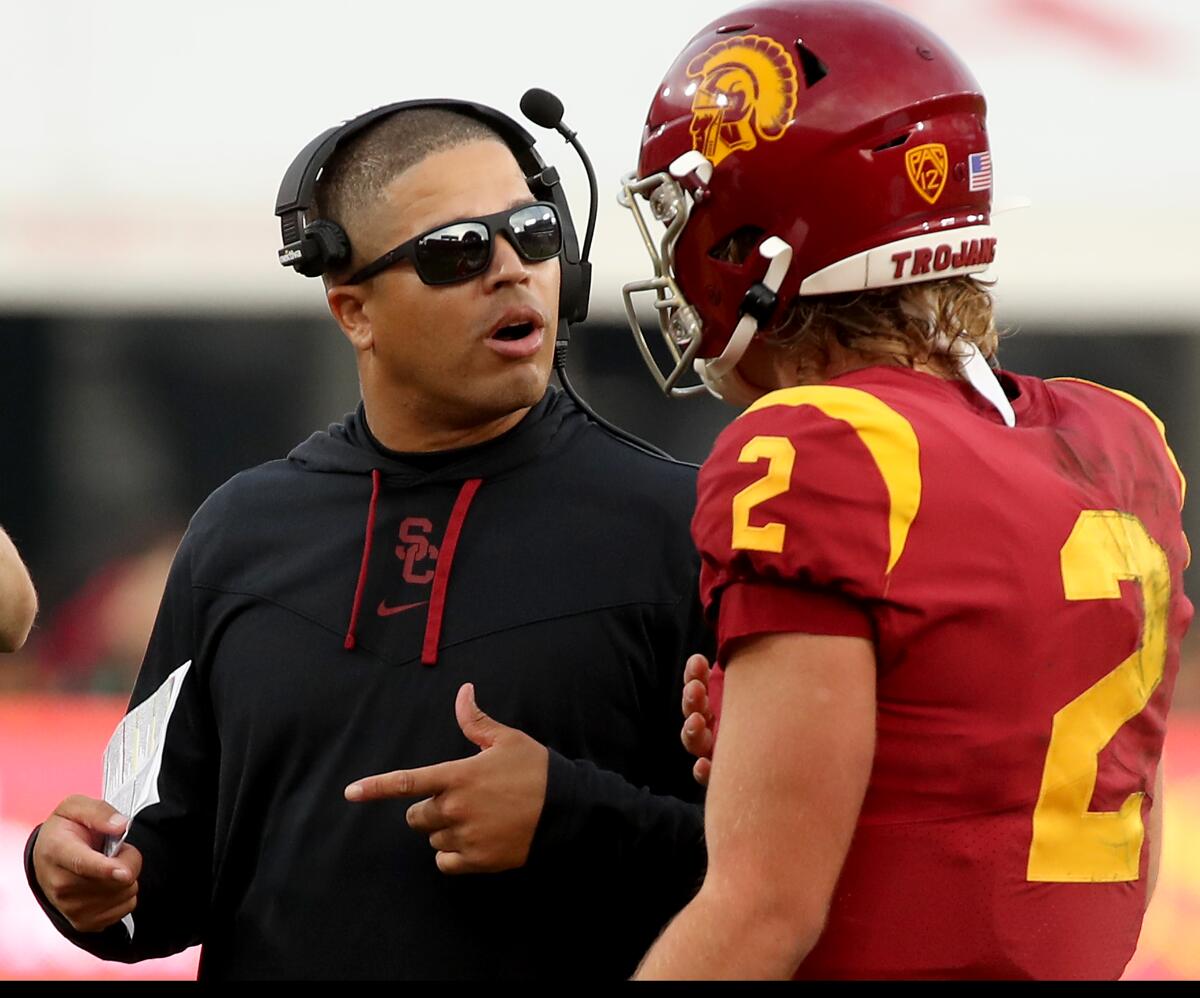
As USC star wide receiver Drake London was carted away from the Coliseum field with tears in his eyes and his right ankle in a cast, any hope of the Trojans salvaging this season seemed to roll away with him. USC managed to come away with a win, but the ramifications from Saturday could reverberate the rest of the season.
Here’s what else we learned from the Trojans’ 41-34 victory over Arizona.
Quarterback controversy
The expectation was that freshman Jaxson Dart would get some snaps and perhaps play a few series Saturday in his much-anticipated return from a meniscus injury. What we didn’t expect was that Dart would be the quarterback for a decisive drive late in the fourth quarter with USC leading by only a touchdown.
“It’s tough,” starter Kedon Slovis said. “Obviously, you want to be in. You think you give your team the best chance to win, but that’s the coach’s decision.”
USC interim coach Donte Williams said playing Dart at that crucial point in the game was part of the initial plan to rotate both quarterbacks. But coaches had already adjusted their plans once Saturday, giving Slovis an extra drive to open the game.
With the game on the line, the Trojans’ coaches chose to trust Dart rather than their two-time All-Pac-12 passer. If they went to Dart during the most important drive of the game only because their previous plan insisted on it … well, that might say even more about this staff’s decision-making.
Trojans star wideout Drake London suffered what could be a season-ending injury, while Jaxson Dart returned to action as USC beat Arizona 41-34.
“I don’t really care what the score was, we were going to play him,” offensive coordinator Graham Harrell said. “I got a ton of confidence in either one of them.”
Either way, USC finds itself with questions at quarterback. Again. Slovis was the more polished of the two early, but he struggled in the third quarter after he reentered the game. He finished 15-for-21 passing for 204 yards and two touchdowns with a bad interception that he blamed on not being able to feel adjustments made by Arizona’s defense. Dart, meanwhile, finished 12 for 18 for 109 yards and two touchdowns.
Neither quarterback said they knew where Williams planned to go from here. Williams wouldn’t offer much on that subject either.
“We’ll continue to do what we need to do to win the football game,” Williams said.
Keaontay Ingram breaking out
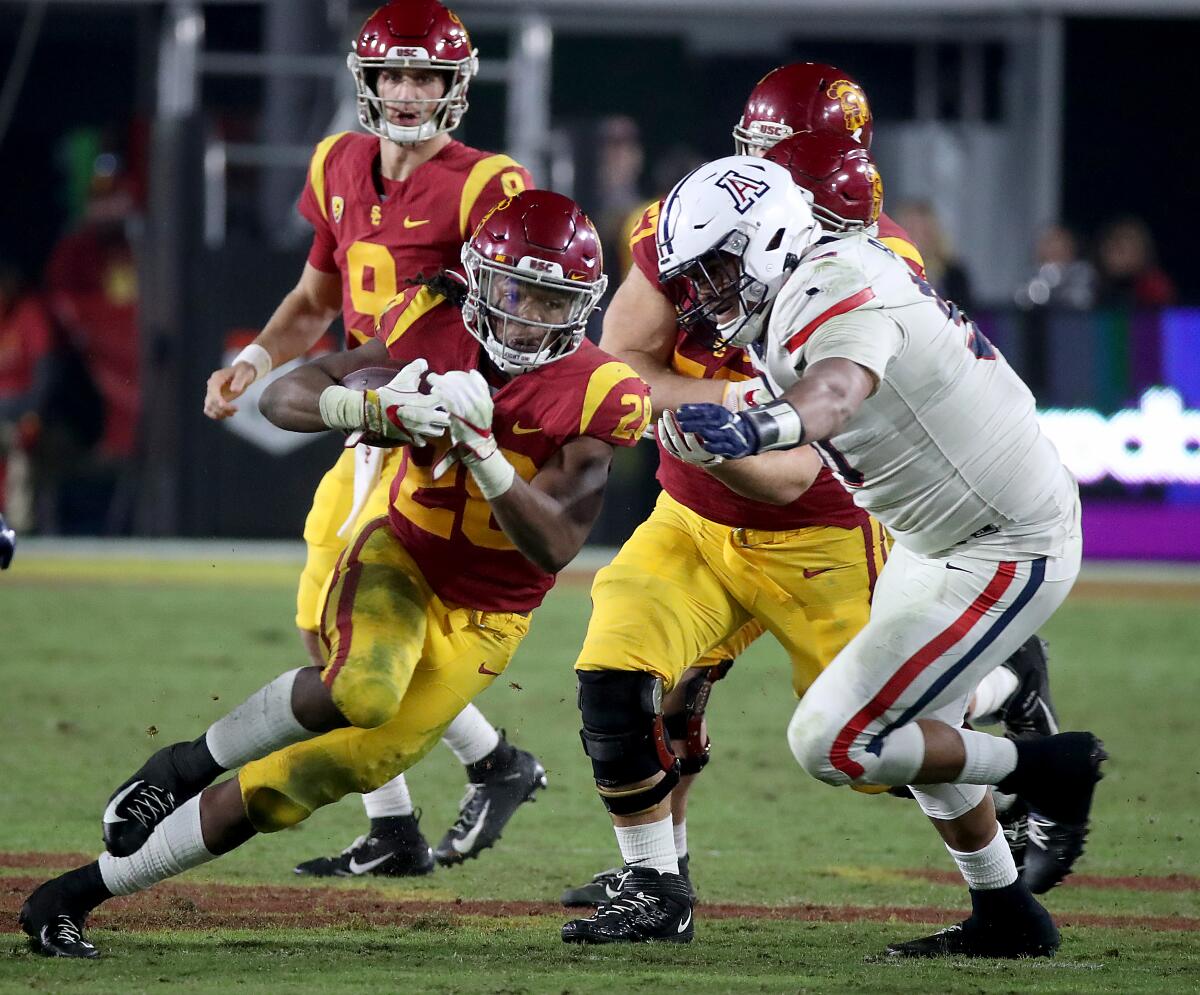
Lost in the chaos of London’s injury and the two-quarterback split was a tremendous performance from running back Keaontay Ingram, who followed up his 138 yards against Notre Dame with a career-high 204 against Arizona.
With London out, Ingram was the backbone of USC’s offense, running violently and dragging defenders with him on nearly every play. Williams pointed to the running game as the Trojans’ main bright spot Saturday.
“[Ingram] ran mad,” said Jalen McKenzie, who replaced Jonah Monheim at right tackle. “He ran angry. We can feel that. It turns all of us up.”
Ingram was aided by an offensive line that has improved leaps and bounds in opening up holes in the running game. But that offensive line also hurt Ingram in spurts, as 88 potential rushing yards were eliminated by penalties.
“He could’ve had like 300 without penalties,” McKenzie said. “That’s all of our fault.”
Kenneth Walker ran for five touchdowns to lead No. 8 Michigan State to a 37-33 win over No. 6 Michigan, while No. 5 Ohio State beat No. 20 Penn State 33-24.
Still work to do
USC (4-4 overall, 3-3 Pac-12 Conference) can breathe a sigh of relief after surviving a comeback attempt from winless Arizona (0-8, 0-5), but the Trojans aren’t celebrating this victory.
“We’re trying to go to a conference championship, so we need to play better than that win,” McKenzie said, pointing out the wide-open nature of the Pac-12 South. “A win is a win, but we like to win better than that. That’s not acceptable for our standards.”
USC failed to score a touchdown in the second half, needing two field goals to hold off an Arizona team that hasn’t won a game since 2019. Familiar penalties were at fault for some of the struggles, including a holding call that wiped out a 66-yard rushing touchdown byIngram. USC had nine penalties for 100 yards.
“That’s unacceptable,” said Williams, who noted that seven penalties occurred during the second half, when USC was trying to sustain its 21-point halftime lead.
The Trojans became complacent in the second half, Harrell acknowledged. Third-quarter struggles stuck out again as the team was held to a field goal. USC has been outscored in the third quarter 70-44 this season.
On defense, USC allowed Arizona to rack up season highs in points (34) and yards (466), with the secondary giving up 339 yards through the air.
No one’s home
The announced attendance of 52,435 was the second lowest for a USC home game this season, trailing only a 7:30 p.m. kickoff against Oregon State that drew 51,564. Saturday’s tally is roughly 70% of the Coliseum’s capacity, but the stands looked just 40% to 50% full midway through the first quarter. Even most of the students did not file in until minutes after kickoff.
To have so many empty seats for a homecoming game shows just how far the program has fallen. In addition to fixing the team’s numerous on-field problems, a new coach must find a way to win back disenchanted fans.
More to Read
Go beyond the scoreboard
Get the latest on L.A.'s teams in the daily Sports Report newsletter.
You may occasionally receive promotional content from the Los Angeles Times.


